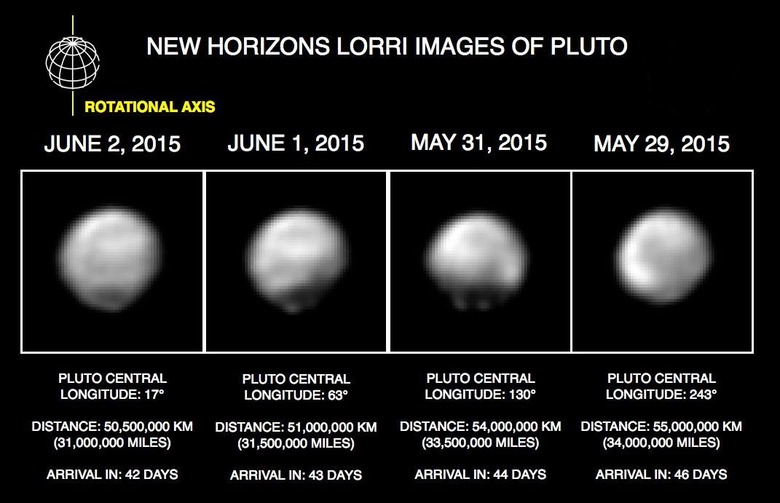NASA Photographs Pluto: Watch New Horizons Approach
Today NASA's New Horizons spacecraft presented a series of images beamed back from space as it moves close to Pluto. Closer than we've ever been before. This mission's images – attained between May 29th and June 2nd, show Pluto as a "complex world with very bright and very dark terrain." NASA suggests that these images "afford the best views ever obtained of the Pluto system." Below you'll see these images in their full glory – and NASA's provided links to RAW images as well, if that's what you're all about.
Processing images with a technique by the name of deconvolution – fitting, yes? – the crew of scientists at New Horizons have sharpened image data to present to you the following. For those of you looking for raw, unprocessed images far too large for your puny smartphone, head to the New Horizons' LORRI Images
Credit for all images and video in this article go to NASA/Johns Hopkins University Applied Physics Laboratory/Southwest Research Institute.

Above you'll see four different "faces" of Pluto as it rotates in space. The axis has been adjusted to align with one another. For comparison's sake.
At this time – beyond these images, that is to say – New Horizons is approximately 2.9 billion miles (4.7 billion kilometers) from Earth. This craft is also just 24 million miles (39 million kilometers) from Pluto.
"We're squeezing as much information as we can out of these images," said New Horizons Project Scientists Hal Weaver, from the Johns Hopkins University Applied Physics Laboratory in Laurel, Maryland, "and seeing details we've never seen before."

Above you'll see an image uploaded to public servers by NASA back in March. Below you'll see an image uploaded by NASA in June.

We're getting closer!
"We've seen evidence of light and dark spots in Hubble Space Telescope images and in previous New Horizons pictures," said Weaver, "but these new images indicate an increasingly complex and nuanced surface.
"Now, we want to start to learn more about what these various surface units might be and what's causing them. By early July we will have spectroscopic data to help pinpoint that."
As we said this April, Pluto is no longer just a point of light!

Scientists have been working on deconvolved images from New Horizons for weeks, finding "a wide variety of broad surface markings," according to NASA. A bright area near one of the planet's poles is what these scientists believe to be a polar cap.
Below you'll see a video showing "dramatic variations in Pluto's surface features" as it rotates in space. While some images may suggest that Pluto might be slightly non-spherical, NASA suggests that this is a sort of trick of the eye.
Have a peek in the timeline below for more Pluto bits and pieces as NASA continues to move closer and closer!
